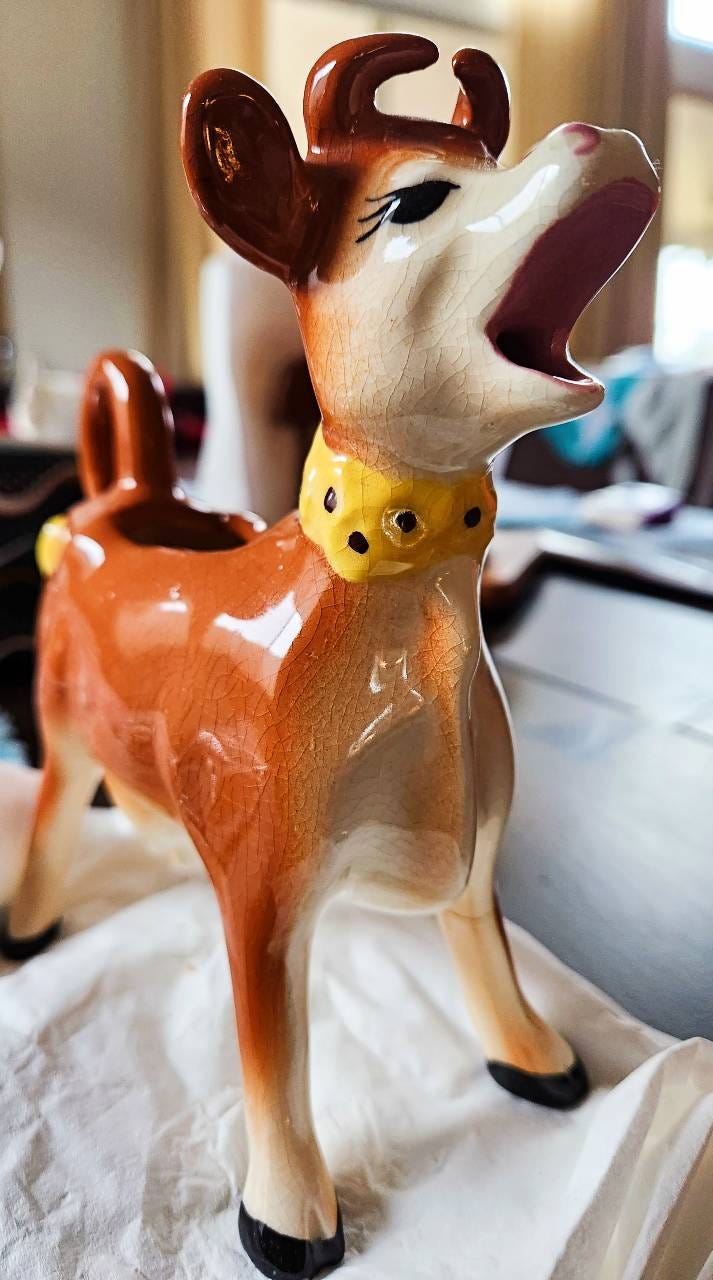Elsie the Cow, a widely-recognized symbol of the Borden Dairy Company, which disappeared in the 1990s, remained as a ceramic creamer in my mother’s kitchen. The milk or cream, filled through an opening on Elsie’s back, flowed into a cup of coffee or tea through the figure’s open mouth when a helpful hand lifted the animal’s tail. As a young child, I had no idea how a cow produced milk, the anatomical reality wasn’t an issue. I loved the idea that this inanimate object had a useful purpose. I would often insert a straw down Elsie’s throat for a delightful shortcut.
My mother collected ceramic objects: a host of people and animal-shaped salt and pepper shakers and a Dutch girl cookie jar among them. Mom baked wonderful cookies from time to time and loaded the jar. The temptation, too hard to resist, led to the porcelain girl’s head rolling off the countertop and shattering on the kitchen floor as my greedy, little hand reached for cookies near the jar’s bottom. I knew how much she enjoyed her ceramic figures. That unfortunate incident is one I wished I could roll back in a time machine.
Collecting fascinated me. A boxed set of small, assorted rocks with brief explanations,, purchased in a museum gift shop, set me on a journey of rock collecting at the age of nine. The Catskill Mountains, where I lived, had rocks everywhere. Eons before my arrival on earth, a glacier had traveled through, leaving behind specimens worthy of a place in my red collection box on top of the dresser in my room. Once in a while, I’d find a flint arrowhead—shot from a Lenape warrior’s bow while stalking the deer in my imagination.
My family has a history of collecting. A paternal grandfather, a Polish immigrant, was a self-employed junk dealer. One of his sons, my Uncle Henry, took the trade to a higher level—antiques. In the summer, he’d drive his roomy station wagon from the Bronx to the Catskills, traveling farm roads in search of antiques. I enjoyed riding with him. He shared his knowledge while smoking one of his carved meerschaum pipes.
Farmers often posted signs, Antiques for Sale. Uncle Henry visited every farm—whether or not it had a sign. Barns served as storehouses for unwanted items. Uncle Henry, in his affable manner, would engage the farmers and survey the contents. If he saw an item he liked, he’d say something like, “I’ll give you five dollars for that old lamp.” The farmer would reply, “I’d like ten.” My uncle would counter, “It has grapes painted on the globe. Fruit isn’t popular. I can’t do anything with it. If it had birds or flowers, it would be worth ten.” The farmer would surrender and take five dollars. When we returned to the car, I asked, “Uncle Henry, what was that about fruit?” He smiled. “This is a Gone With The Wind Lamp—in high demand. In the city, collectors pay a lot for them. The design doesn’t matter.” My uncle taught me that knowledge has value. He was the link between supply and demand. His expertise provided a good living.
A carved wooden bust of Abraham Lincoln, with the name of the artist etched in the bottom, given to me by my uncle, a collector of the highest order, sits on my desk. When I look at it, I think of him and the education he gave me. He knew the history and value of every item he bought and sold—no matter where it came from. Success doesn’t come from a college degree. It comes from a thirst for mastery.
Howard Feigenbaum is the author of:
Benny Goldfarb, Private “I” – a trilogy including Home Stretch, Hot Zone
Henry Samson: Finder of Wrongdoing – a trilogy published under the pen name, H.F. Jefferson
How to Cook a Turkey and Other Poems
We’re All Nuts! – a children’s book





Thanks, Karen!
Great piece, Howard! I recognized the little bovine creamer. We didn't have one, but I remember seeing them back in the day.